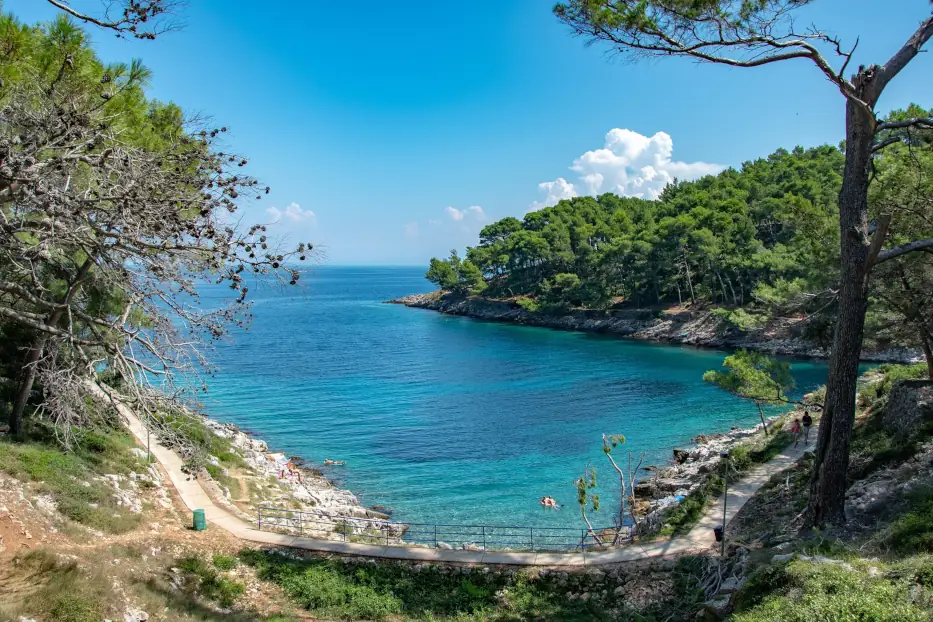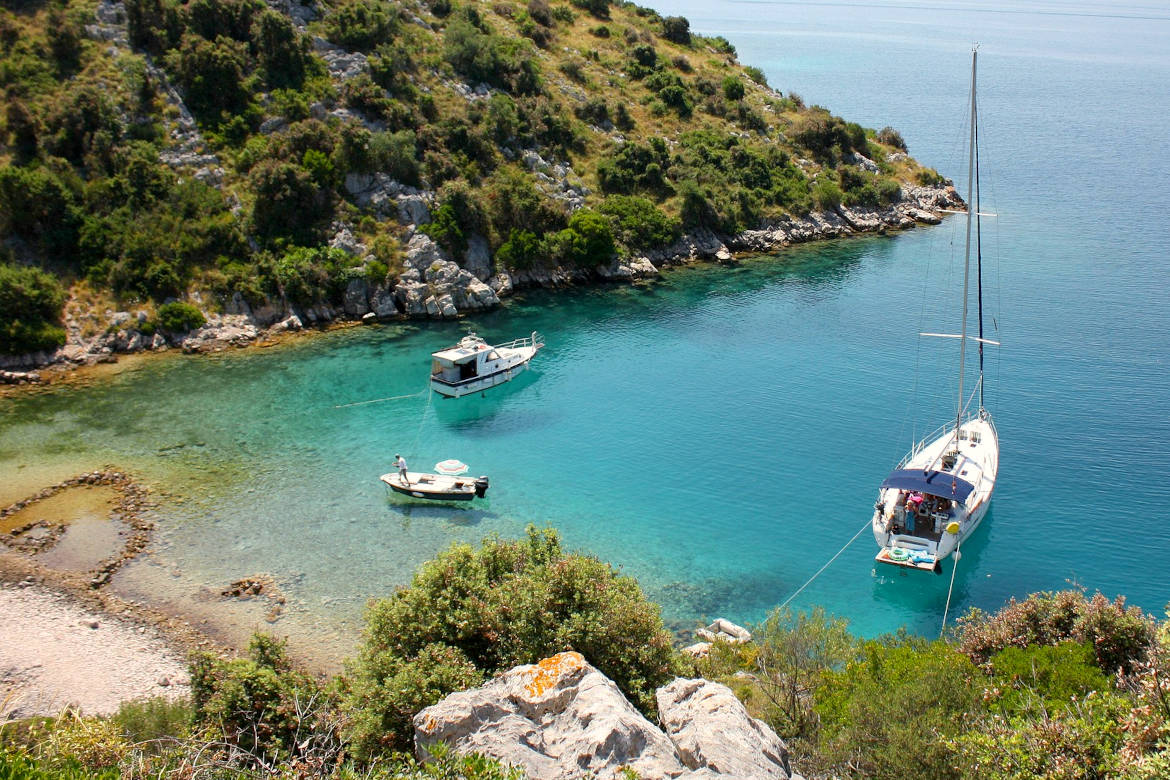Nestled in the northern Adriatic, Cres is a stunning island full of charm and natural wonders. It shares the title of Croatia’s largest island with its neighbor, Krk, both spanning 405.78 square kilometers (156.67 square miles) each.
With its diverse landscapes, rich history, and crystal-clear waters, Cres is a paradise waiting to be explored.
Table of Contents
Geography and Size
Part of the Kvarner Gulf archipelago, Cres lies just off the Istrian Peninsula. Its landscape is a mix of rolling hills, dense forests, and breathtaking coastlines. The highest peak rises to 639 meters (2,096 feet), offering panoramic views of the Adriatic.
Made mostly of limestone, the island features striking cliffs, caves, and rugged terrain shaped by centuries of wind and waves.
For years, Krk was considered the largest Croatian island. However, in the 1990s, new measurements revealed that Cres and Krk have exactly the same surface area, which seems almost impossible.
As the Adriatic Sea gradually rises, Cres, with its steeper coastline, is expected to erode more slowly than Krk. This means that over time, Cres may remain the largest island in Croatia.
Croatia’s Five Largest Islands
| Island | Area (km²) | Area (sq mi) | Location |
|---|---|---|---|
| Cres | 405.78 | 156.67 | Kvarner Gulf |
| Krk | 405.78 | 156.67 | Kvarner Gulf |
| Brač | 396 | 153 | Central Dalmatia |
| Hvar | 297.37 | 114.82 | Central Dalmatia |
| Pag | 284.56 | 109.87 | Northern Dalmatia |
Unique Geographical Features
One of Cres’s most fascinating features is Lake Vrana, a large freshwater lake in the island’s center. It’s among one of the deepest in Southern Europe, reaching 76 meters (249 feet), and sits above sea level, providing drinking water for the island and beyond.
Cres’s coastline is equally spectacular, with hidden coves, rugged cliffs, and pristine beaches. Among them, a secluded beach beneath a dramatic rock face and a turquoise bay tucked between limestone cliffs are favorites for visitors looking to escape the crowds.
Culture and History
Cres has a long and colorful past, shaped by various civilizations. One of its oldest settlements, once an important Roman port, still holds remnants of ancient walls and pathways. Throughout history, different rulers left their mark, from Venetian palaces to Austro-Hungarian influences.
A canal, originally dug in ancient times and expanded in the 16th century, separates Cres from Lošinj, an island to the south, now linked by a small bridge.
The largest island in Croatia is dotted with charming stone villages, where time seems to stand still. Some sit high on cliffs, offering sweeping views of the sea, while others hug quiet bays, where fishing boats bob in the harbor. In one, an ancient inscription in early Croatian and Latin speaks to the region’s deep cultural roots.
Wildlife and Nature
Cres is a haven for the Eurasian griffon vulture, one of the largest birds in Europe. With wingspans reaching up to 2.8 meters (9.2 feet), these majestic creatures can often be seen soaring high above limestone cliffs. A conservation center on the island works to protect them and educate visitors about their importance.
The island’s natural beauty extends to its plant life. Wild herbs like sage, rosemary, and lavender grow freely, filling the air with their fragrance. Locals believe some of these plants have healing properties, a tradition passed down through generations.
The forests are home to diverse wildlife, including deer and wild boars — animals not often found on Adriatic islands.
Best Things to Do on Cres
Food and Wine
Cres’s cuisine is deeply connected to its landscape. Fresh seafood is a staple, with octopus, squid, and local fish featured in many dishes.
Sheep and goat cheeses, made from animals grazing on wild herbs, are among the finest in the region. The island’s olive oil, produced from centuries-old groves, is a must-try.
Local wines, especially crisp whites, pair beautifully with the island’s Mediterranean flavors, creating unforgettable dining experiences in seaside taverns and rustic farmhouses.
For a truly memorable cultural adventure in Europe, elevate your wine-tasting journey beyond Croatia’s largest island to include Sardinia, Italy, and Spain’s Canary Islands.
How to Get to Croatia’s Largest Island
Reaching Cres is part of the adventure. Ferries connect the port of Porozina on Cres to the mainland town of Brestova.
The nearest airports, Rijeka Airport on Krk Island and Pula Airport, offer convenient access, with bus and road connections guiding travelers to this picturesque destination. A bridge links Cres to the island of Lošinj, allowing for easy exploration of the wider region.
Best Time to Visit Cres
Cres enjoys a Mediterranean climate, with hot summers and mild winters. The best time to visit is in late spring or early autumn, when the weather is pleasant, and crowds are fewer. This is ideal for hiking, cycling, and exploring the island’s stunning nature.
For those seeking a classic beach holiday, summer offers the warmest sea temperatures. However, for travelers looking for a quieter escape, the shoulder seasons provide the perfect balance of warmth and tranquility.

Why Visit the Largest Island in Croatia
Cres is a paradise for outdoor explorers, history enthusiasts, and culinary admirers. Hikers can explore dense forests, ancient villages invite discovery, and hidden beaches provide a perfect retreat.
As the largest island in Croatia, Cres has something for everyone. With untouched beauty, rich traditions, and mouthwatering cuisine, the island remains one of the Adriatic’s best-kept secrets.
Vultures glide over dramatic cliffs, fresh seafood is served by the sea, and cobblestone streets whisper tales of the past. Every corner of Cres reflects its timeless charm, waiting to be discovered.
